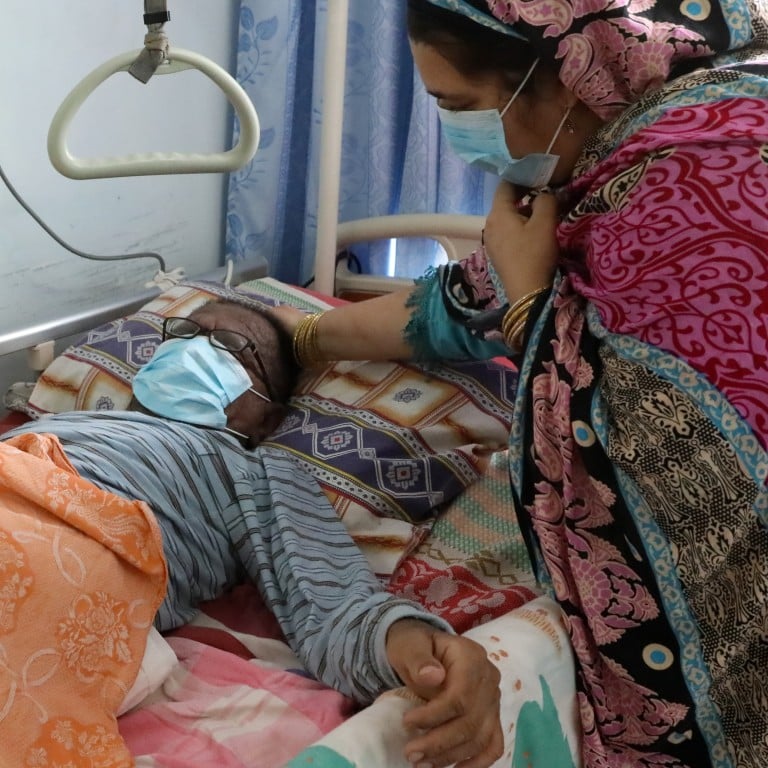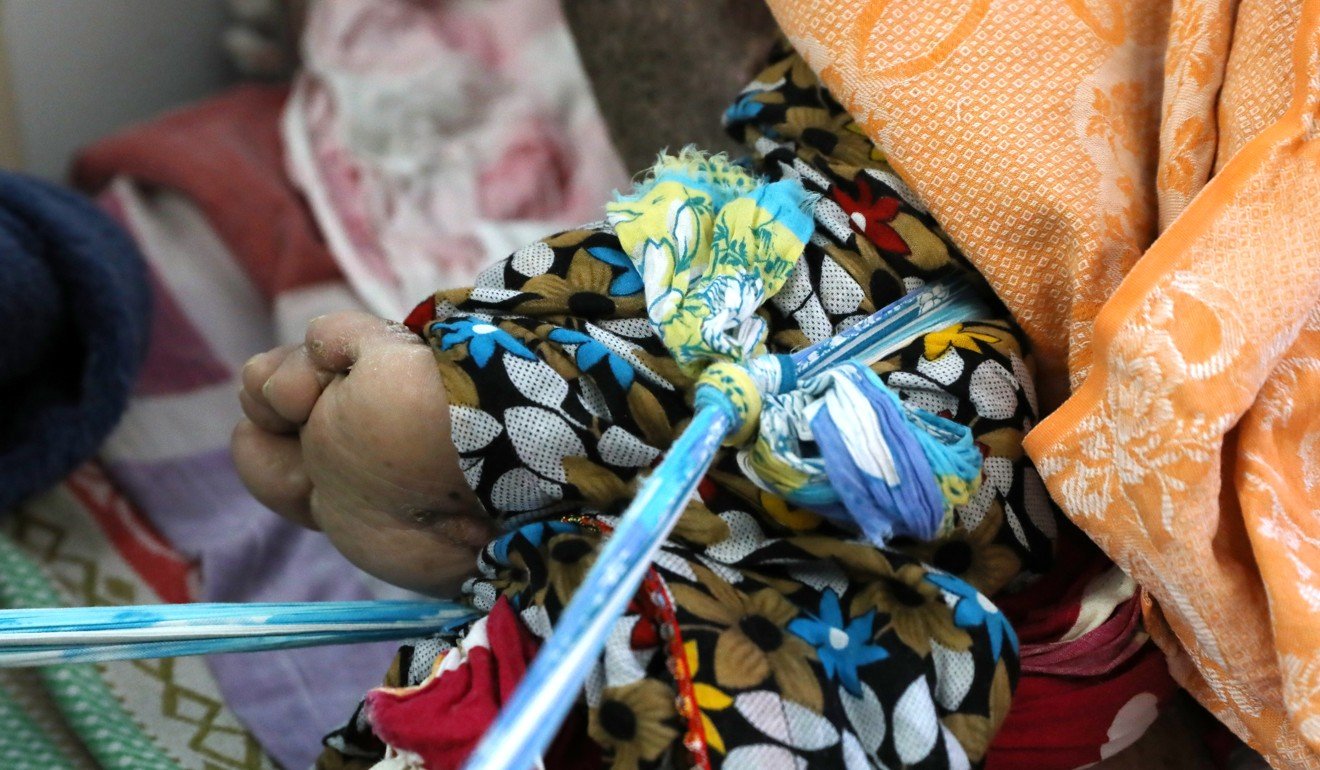
Communication woes between ethnic minority patients and Hong Kong doctors spark call for better health care training
- Experts say such population groups are more susceptible to health care problems and usually fall short of addressing issues with providers
Yousaf Akbar, 40, came to Hong Kong from Pakistan in the late 1980s, but since last year, he has been spending time between the bed and a wheelchair at home.
He relies on strips of cloth to shackle his legs to the bed, as he was diagnosed with infective spondylodiscitis, or infection in the spine and adjacent bone structure, as well as spinal cord compression. This has caused his legs to contract and bend. They are tied to the bed to lessen the impact of the condition.
Akbar depends heavily on the care by his wife and elderly mother, who both live with him in a public rental flat in Shau Kei Wan. “I find it really difficult to bear ... My legs will bend towards my chest if they are not tied, and I will not be able to breathe properly.”

Akbar’s family said doctors at Pamela Youde Nethersole Eastern Hospital had not properly briefed them on treatment options, instead only telling him surgery – which was a viable option but had to be performed early – was risky. As a result, he rejected an operation twice and only relied on antibiotics and an external brace.
It was only in July this year that he was told by a private orthopaedist that it was too late to receive surgery.
Akbar is not the only patient from ethnic minority groups facing such problems with the city’s health care services. Experts said language barriers and lower access to information contribute to their vulnerability.
Hong Kong must not neglect ethnic minorities’ health care needs
According to the 2016 population by-census, ethnic minorities account for 3.6 per cent of the city’s population, with their numbers totalling more then 260,000. Among them, about 85,000 are people of South Asian origin.
Akbar said: “The doctor told me it would be a major operation and it would be very dangerous, and asked me not to do it.” He added that the consequences of not conducting the surgery were also not laid out in detail to him.
My brother did not understand [the surgery] very well. He received an education until Primary Six only
His sister, Shabana, said: “My brother did not understand [the surgery] very well. He received an education until Primary Six only ... He always stayed at home and knew very little about the outside world.
“Isn’t it the responsibility of doctors to explain [treatment options] to the patient’s family too?”
While the hospital said a doctor had contacted an immediate family member over the phone, Shabana said no one received the call.
A hospital spokeswoman said discussion on treatment options was usually between doctors and a patient, if the person was a “conscious and mentally competent adult”.
Tim Pang Hung-cheong, a patients’ rights advocate who has been assisting Akbar and his family, said members of ethnic minority groups in Hong Kong usually did not know how to seek help when facing problems with health care services, as they had less access to information on local media in general.
Pang added that it would be more prudent for the hospital to involve family members who could communicate well when making decisions related to major operations.
Hong Kong charity reaches out to ethnic minorities who face barriers to health care
Health sector lawmaker Joseph Lee Kok-long said ethnic minority patients often faced obstacles in communication and experienced cultural differences, making them more susceptible to chronic illnesses such as diabetes and cardiovascular diseases than the local Chinese population.
He called for public health care providers to be trained in handling patients from different ethnic groups.
As for Akbar, he only saw a physiotherapist once – in September this year – since being discharged in late November last year.
His family questioned the lack of physiotherapy services during his two-month stay at the hospital, and also the lack of home occupational therapy services after he was discharged. They said in the absence of any proper follow-up therapy, they came up with the method to use cloth strips to tie down his legs at home.
The hospital said it had provided physiotherapy for Akbar during his stay. But an occupational therapist to assess how his home should be modified for better care would only visit next month, more than a year after he was discharged.
The spokeswoman said staff would continue to treat and assist Akbar’s rehabilitation. Apart from relieving his pain and spasms with medication, the hospital would also arrange mobilisation exercises to manage his lower limbs contracture.

